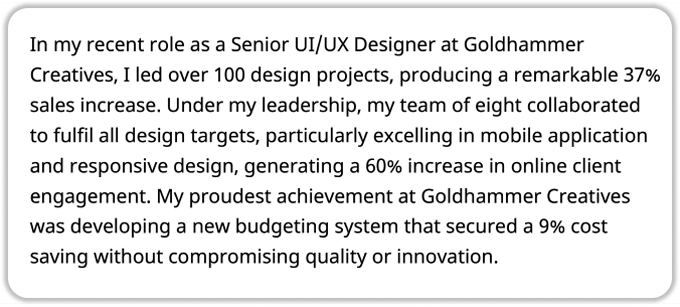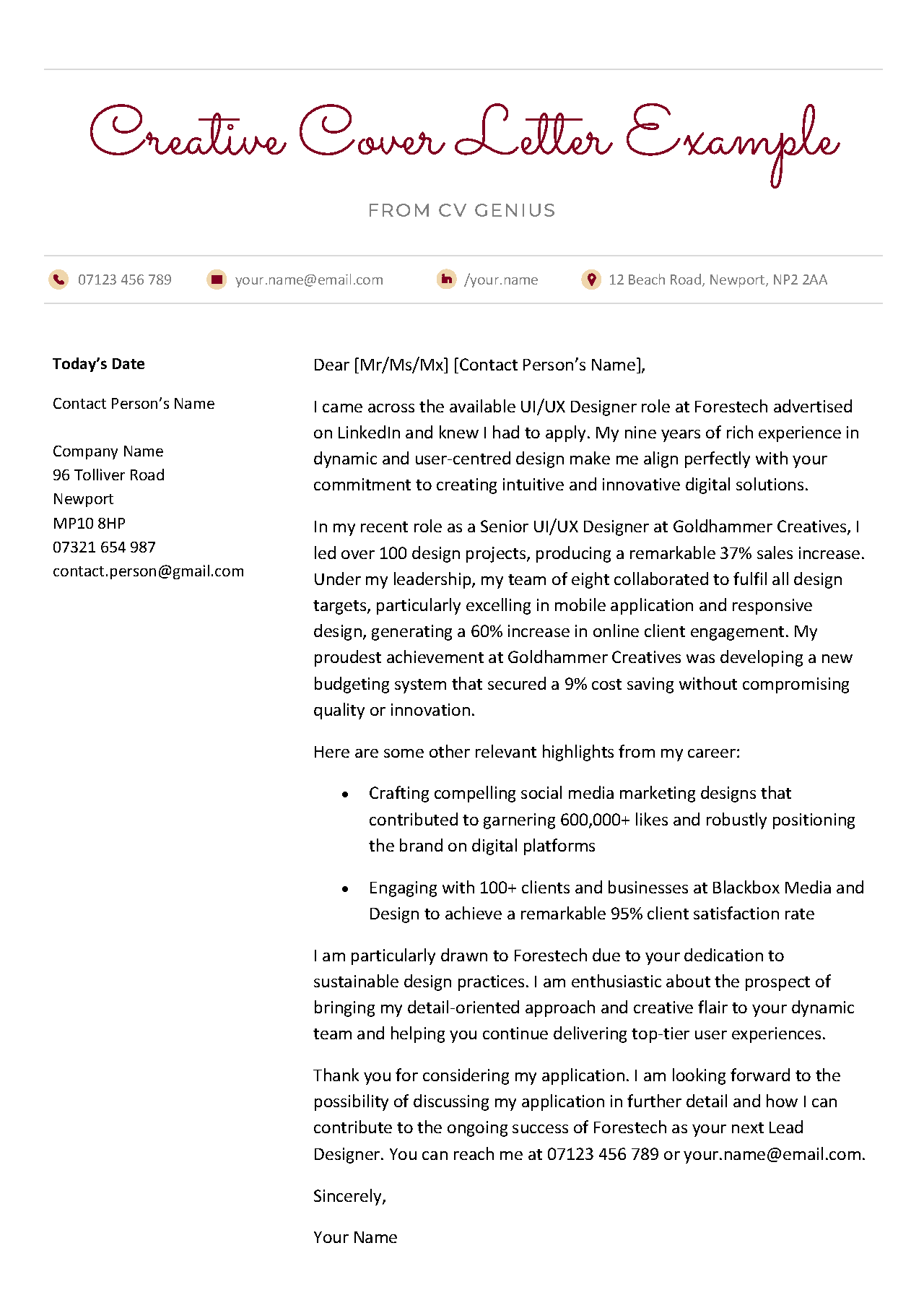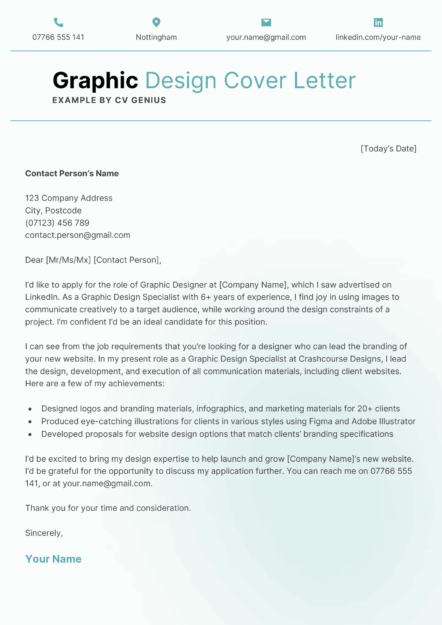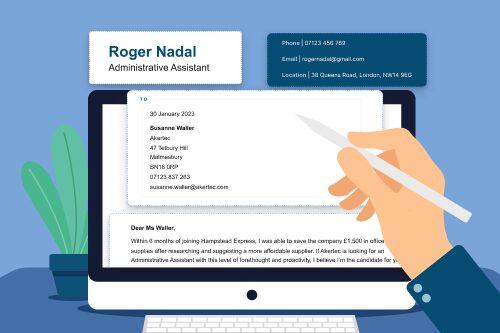Be sure you use the proper cover letter format to make your cover letter readable and professional.
Designer Cover Letter Template (Text Format)
Today’s Date
Contact Person’s Name
Company Name
96 Tolliver Road
Newport
MP10 8HP
07321 654 987
contact.person@gmail.com
Dear [Mr/Ms/Mx] [Contact Person’s Name],
I came across the available UI/UX Designer role at Forestech advertised on LinkedIn and knew I had to apply. My nine years of rich experience in dynamic and user-centred design make me align perfectly with your commitment to creating intuitive and innovative digital solutions.
In my recent role as a Senior UI/UX Designer at Goldhammer Creatives, I led over 100 design projects, producing a remarkable 37% sales increase. Under my leadership, my team of eight collaborated to fulfil all design targets, particularly excelling in mobile application and responsive design, generating a 60% increase in online client engagement. My proudest achievement at Goldhammer Creatives was developing a new budgeting system that secured a 9% cost saving without compromising quality or innovation.
Here are some other relevant highlights from my career:
- Crafting compelling social media marketing designs that contributed to garnering 600,000+ likes and robustly positioning the brand on digital platforms
- Engaging with 100+ clients and businesses at Blackbox Media and Design to achieve a remarkable 95% client satisfaction rate
I am particularly drawn to Forestech due to your dedication to sustainable design practices. I am enthusiastic about the prospect of bringing my detail-oriented approach and creative flair to your dynamic team and helping you continue delivering top-tier user experiences.
Thank you for considering my application. I am looking forward to the possibility of discussing my application in further detail and how I can contribute to the ongoing success of Forestech as your next Lead Designer. You can reach me at 07123 456 789 or your.name@email.com.
Yours sincerely,
[Your Name]
How to write a job-winning designer cover letter
Before you begin writing, make sure you know how to write a cover letter in a way that makes you seem like the best candidate for the job.
Crafting a stand-out designer cover letter is essential to describing your skills, experience, and passion for design to potential employers.
While you should make a CV that details your career chronologically, your cover letter is meant to narrate your story and explain why you’re the perfect fit for the role.
Here are three tips to help you create a designer cover letter that impresses the recruiting manager at the company you want to work for.
1. Use professional formatting
Regardless of the creative nature of design roles, maintaining a professional format for your cover letter is crucial. So stick to a simple, clean layout that lets your content take centre stage.
Use a formal letter format by:
- including your contact details, the date, and the employer’s contact information in a cover letter header at the top
- using a clear, readable font, such as Arial or Calibri
- keeping the text size within 10–12 points
- ending your cover letter with a polite sign-off (like ‘Yours sincerely,’) followed by your name
Also, use white space effectively to create a visually appealing document without overwhelming the reader.
Your cover letter shouldn’t exceed one page, ensuring that it’s concise yet impactful.
2. Tailor your designer cover letter to the role
An often underused strategy in cover letter writing is tailoring the content to the specific role you’re applying for. Employers will appreciate your taking the time to write a job application specifically for them.
Begin by thoroughly researching the company and understanding their values, projects, and design aesthetic. Then, address your cover letter to the recruiting manager by name, express why you’re excited about the role, and explain how your skills and experiences align with the job description and the company needs you discovered in your research.
Also, use keywords from the job listing to demonstrate that you’ve crafted your design cover letter with this particular role in mind.
Below is a great example of how to customise a cover letter to a company that needs a lead designer to increase sales and engagement while reducing costs:

3. Include specific examples and hard numbers from your design experience
Stories are powerful, and your experiences, complemented by quantifiable achievements, tell your professional design story effectively. So rather than just stating your skills, showcase them through examples.
If you claim to be proficient in user experience design, prove it by detailing a situation where your UX design led to an increase in user engagement or sales. And use the STAR (Situation, Task, Action, Result) method to make your examples clear.
Additionally, add hard numbers to show the scale of your impact in your current and previous design roles.
For instance, instead of saying you ‘contributed to user-centred designs that boosted sales’, you might say, ‘Spearheaded a user-centred redesign of a struggling product’s interface, contributing to a 35% sales uptick in 6 months’.
Does writing your design cover letter from scratch seem like a hassle? Use a good cover letter builder that writes professional content for you.








